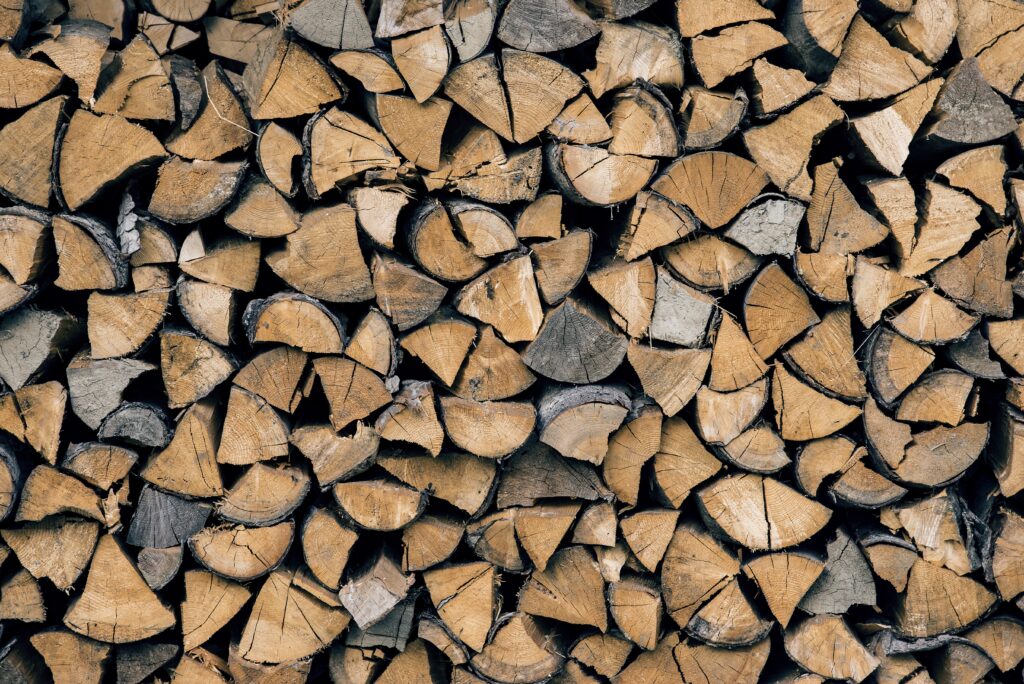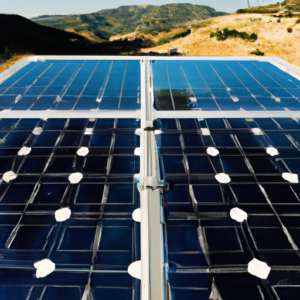If you’ve ever wondered how to make the perfect compost pile, look no further! In this article, we’ll explore the four essential ingredients that will ensure your compost is a success. From organic matter to moisture levels, each element plays a crucial role in creating nutrient-rich compost that will benefit your garden and reduce waste. So roll up your sleeves and get ready to transform your kitchen scraps and yard waste into black gold for your plants! Let’s dig in and uncover the secrets to a thriving compost pile.
Check Out Our Recommended Composting Products on Amazon Right Here!
Exploring the World of Important Ingredients
Selecting the Right Location
Choosing a suitable spot
Selecting the right location for your compost pile is essential for its success. You’ll want to choose an area that is easily accessible, so you can conveniently add kitchen scraps and yard waste. Look for a spot that is level and well-drained to avoid water pooling. Additionally, consider proximity to your garden or plants, as the compost will eventually be used as a nutrient-rich soil amendment.
Considering sunlight and shade
When deciding on the location, take into account the amount of sunlight and shade the area receives. While some sunlight is necessary for the decomposition process, too much can dry out the pile. Aim for a spot that receives partial sunlight, allowing for a balance between warmth and moisture.
Avoiding areas prone to flooding
It’s important to avoid areas that are prone to flooding, as excessive moisture can hinder the composting process and create an anaerobic environment. Find a location away from low-lying areas or areas where water tends to accumulate. This will prevent your compost pile from becoming waterlogged and ensure proper oxygen flow.
Choosing the Right Container or Bin
Using a compost bin
Using a compost bin is a popular option for those looking to keep their compost contained and tidy. Compost bins come in various sizes and styles, allowing you to choose one that suits your needs and preferences. These bins provide structure and help retain heat, promoting faster decomposition. They also prevent pests from accessing your compost pile and keep it visually appealing.
Opting for a compost tumbler
If you prefer a more low-maintenance approach, consider using a compost tumbler. Compost tumblers are designed with a rotating drum that allows for easy mixing and aeration. This constant turning accelerates the decomposition process and eliminates the need to manually turn the compost pile. It’s a convenient option for those with limited time or physical limitations.
Building your own compost heap
Alternatively, you can choose to build your own compost heap. This option provides flexibility in terms of size and allows for a larger composting volume. Building a compost heap involves creating a structure using wooden pallets or wire mesh to contain the materials. While it requires more effort and manual turning, a DIY compost heap can be a cost-effective and customizable solution.

Check Out Our Recommended Composting Products on Amazon Right Here!
Adding the Right Carbon-Rich Materials
Introducing brown materials
Carbon-rich materials, also known as brown materials, are a vital component of a successful compost pile. These materials provide the energy and structure necessary for microbial activity. Examples of brown materials include dry leaves, straw, wood chips, and shredded paper. Aim to add a mixture of these materials to achieve a proper carbon balance.
Selecting appropriate sources of carbon
When selecting carbon sources, consider their ease of decomposition. Materials such as dry leaves and small twigs break down relatively quickly, while larger woody materials may take longer. It’s important to strike a balance between easily decomposable materials and those that break down more slowly, as this creates a steady supply of carbon throughout the composting process.
Avoiding materials that inhibit decomposition
While certain carbon-rich materials are beneficial for composting, others should be avoided as they inhibit the decomposition process. Examples include large branches or logs that take an extended time to break down. Additionally, avoid adding materials treated with chemicals or materials that are known to be invasive or harmful, such as black walnut leaves or poison ivy.
Incorporating Nitrogen-Rich Materials
Adding green materials
Nitrogen-rich materials, also referred to as green materials, provide the essential nutrients that fuel microbial growth and help break down the compost pile. Examples of green materials include grass clippings, vegetable scraps, coffee grounds, and fresh plant trimmings. These materials contribute nitrogen to the pile and help create a balanced environment for decomposition.
Choosing nitrogen sources
When selecting green materials, it’s important to choose sources that are free from pesticides or herbicides. Organic kitchen scraps, such as fruit and vegetable peelings, are excellent sources of nitrogen. Grass clippings should be used in moderation to avoid compacting the pile or creating an odor. If available, consider adding animal manure from herbivores, as it provides a rich source of nitrogen.
Balancing carbon and nitrogen ratios
Achieving a proper balance between carbon and nitrogen is crucial for successful composting. Ideally, you should aim for a carbon-to-nitrogen ratio of approximately 30:1. This balance ensures that the microorganisms have enough energy (carbon) as well as the necessary building blocks (nitrogen) for their growth and activity. Monitoring the ratio will ensure that the decomposition process remains efficient.

Maintaining Adequate Moisture Levels
Providing sufficient moisture
Moisture is essential for microbial activity and the decomposition of organic matter. Aim to maintain a moisture level similar to a damp sponge. Sprinkle water onto the pile when necessary to keep it moist but not overly wet. The moisture content should be sufficient to allow the materials to break down, but not so excessive that it becomes waterlogged.
Avoiding excessive wetness
While moisture is crucial, excessive wetness can lead to anaerobic conditions and unpleasant odors. If you notice an unpleasant smell or the compost pile appears saturated, it’s a sign of excessive wetness. In such cases, add dry carbon-rich materials, like shredded paper or dry leaves, to absorb the excess moisture and restore the balance.
Monitoring moisture content regularly
Regularly monitoring the moisture content of your compost pile is essential. Use a moisture meter or simply insert your hand into the pile to check its consistency. If the compost feels dry to the touch, add water to moisten it. Conversely, if it feels excessively wet or smells foul, it’s an indication that you need to adjust the moisture levels accordingly.
Maintaining Proper Airflow
Turning the compost pile regularly
Proper airflow is crucial for maintaining aerobic conditions within the compost pile. Regularly turning the pile will introduce oxygen and promote even decomposition. Use a garden fork or compost turning tool to gently aerate the materials. Turning the compost every couple of weeks, or when the interior temperature drops, will ensure the circulation of oxygen and speed up the composting process.
Avoiding compaction
Avoid compacting the compost pile by adding materials in thin layers and avoiding excessive tamping down. Compacted piles restrict airflow and hinder the decomposition process. It’s important to strike a balance between adding enough material for decomposition and allowing sufficient space for air to circulate.
Using aeration tools if necessary
In some cases, you may find that your compost pile needs additional aeration. Aeration tools such as compost aerators or pipes can be used to create air channels within the pile. These tools are inserted into the pile and twisted, allowing for improved air circulation and decomposition. Use aeration tools when you notice that the compost pile isn’t decomposing evenly or when anaerobic conditions are present.

Ensuring a Proper Balance of Microorganisms
Introducing beneficial microbes
Microorganisms, including bacteria and fungi, play a crucial role in the composting process. To encourage the growth of beneficial microbes, you can add compost from a previous pile or purchase compost starter. These additions introduce a diverse population of microbes, speeding up the decomposition process and ensuring a healthy and productive compost pile.
Avoiding harmful pathogens
While introducing beneficial microbes is essential, it’s equally important to avoid harmful pathogens. Avoid adding meat, dairy, or oily foods to your compost pile, as these materials can attract pests and promote the growth of harmful bacteria. Additionally, be cautious about adding plant materials that are diseased or infested with pests, as they can introduce pathogens into the compost.
Creating a favorable environment for microbial activity
Creating a favorable environment for microbial activity involves maintaining a balance of the essential ingredients and conditions necessary for their growth. This includes providing a proper carbon-to-nitrogen ratio, sufficient moisture, and adequate oxygen levels. By maintaining these elements, you are creating an environment where beneficial microorganisms can thrive and efficiently break down the organic materials.
Monitoring and Adjusting pH Levels
Understanding the importance of pH
pH levels measure the acidity or alkalinity of your compost pile. While a slightly acidic or neutral pH is ideal for decomposition, extreme pH levels can inhibit microbial activity. Understanding the pH of your compost pile allows you to monitor its health and make adjustments if necessary.
Monitoring pH regularly
Regularly monitoring the pH of your compost pile can be done using a pH testing kit. The optimal pH range for composting is between 6 and 8, as this range supports the growth of beneficial microorganisms. If your pH falls outside of this range, corrective measures can be taken to adjust and maintain a suitable pH level for decomposition.
Adjusting pH using organic amendments if necessary
If the pH of your compost pile is too low (acidic), you can raise it by adding organic materials with a higher pH, such as crushed eggshells or wood ashes. Conversely, if the pH is too high (alkaline), adding acidic materials like pine needles or citrus peels can help lower the pH. Organic amendments should be used sparingly, and adjustments should be made gradually to avoid extreme changes in pH levels.

Avoiding Contaminants
Avoiding meat, dairy, and oily foods
To maintain a healthy compost pile, it’s crucial to avoid adding meat, dairy, and oily foods. These materials can attract pests, create unpleasant odors, and slow down the composting process. Instead, focus on adding plant-based materials, such as fruits, vegetables, and garden waste, to ensure a balanced and nutrient-rich compost pile.
Avoiding chemically-treated materials
Chemically-treated materials, such as treated wood, should be avoided in compost piles. These materials can contain harmful substances that can disrupt the decomposition process and potentially contaminate the compost. Opt for untreated, organic materials to ensure a safe and natural composting environment.
Minimizing the use of weed-infested materials
While adding weeds to your compost pile is a sustainable way to dispose of them, it’s important to minimize the use of weed-infested materials. Weeds that have gone to seed or are heavily infested with pests can introduce weed seeds or pests into the compost. To prevent this, remove the seeds or mature parts of the weeds before adding them, or consider drying them out separately to ensure they are no longer viable.
Patience and Time
Allowing sufficient time for decomposition
Composting is a natural process that takes time. It’s important to be patient and allow sufficient time for the organic materials to decompose fully. The time required for decomposition varies based on factors such as temperature, moisture, and the size of the materials. On average, composting can take anywhere from a few months to a year. Regular monitoring and turning of the pile will help expedite the process.
Understanding the importance of patience
Patience is key when it comes to composting. It’s essential to resist the temptation to constantly check or disturb the compost pile. Ongoing disruptions can hinder the decomposition process and disrupt the balance of microorganisms. Trust in the natural process and give it time to work its magic.
Recognizing the signs of a mature compost pile
A mature compost pile exhibits specific characteristics that indicate it’s ready for use. Look for a dark brown or black color, a crumbly texture, and an earthy, pleasant smell. These signs indicate that the materials have broken down completely and transformed into nutrient-rich compost. Mature compost can be applied to the garden or used as a top dressing to nourish plants and improve soil health.
In conclusion, creating a successful compost pile requires careful consideration of various factors. By selecting the right location, choosing appropriate containers, and incorporating the right balance of carbon-rich and nitrogen-rich materials, you can create an optimal environment for decomposition. Monitoring moisture levels, maintaining proper airflow, and balancing microorganisms contribute to the efficient breakdown of organic matter. Avoiding contaminants and providing sufficient time for decomposition further enhance the quality of your compost pile. With patience, attention, and the right ingredients, you can create nutrient-rich compost that will benefit your garden and the environment. So grab your shovel and get ready to turn your kitchen scraps and yard waste into black gold!
Check Out Our Recommended Composting Products on Amazon Right Here!




